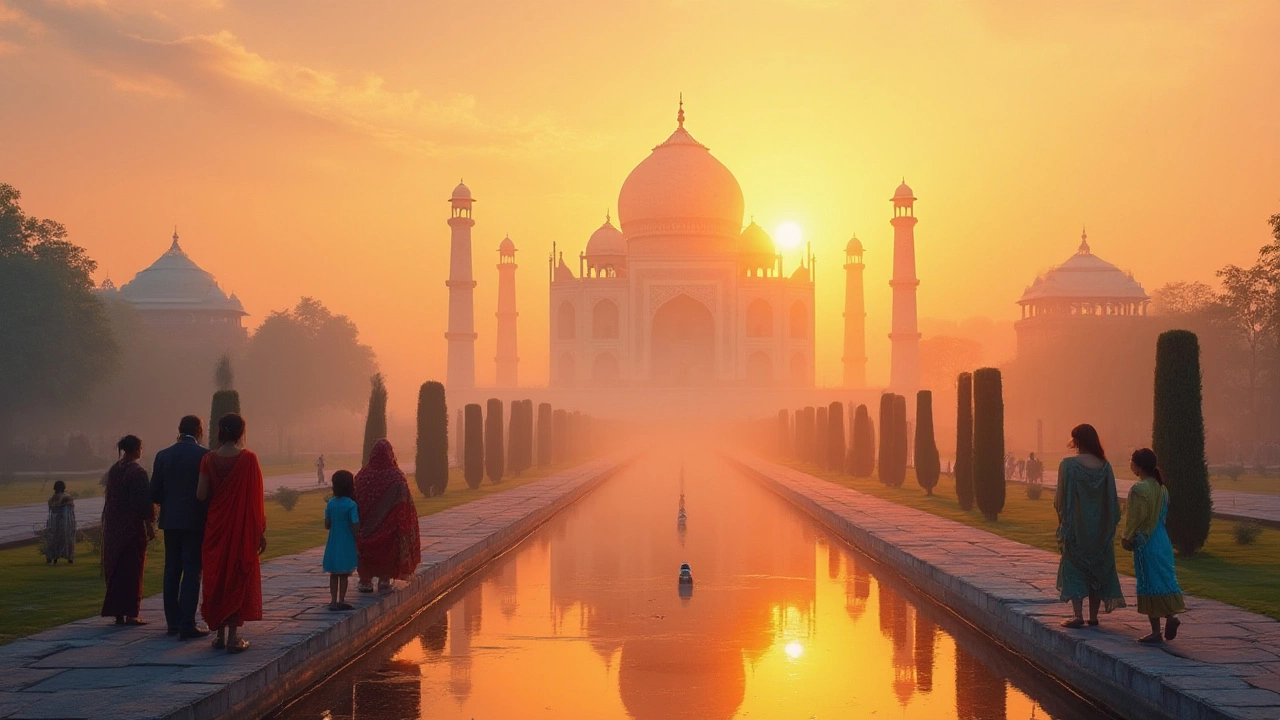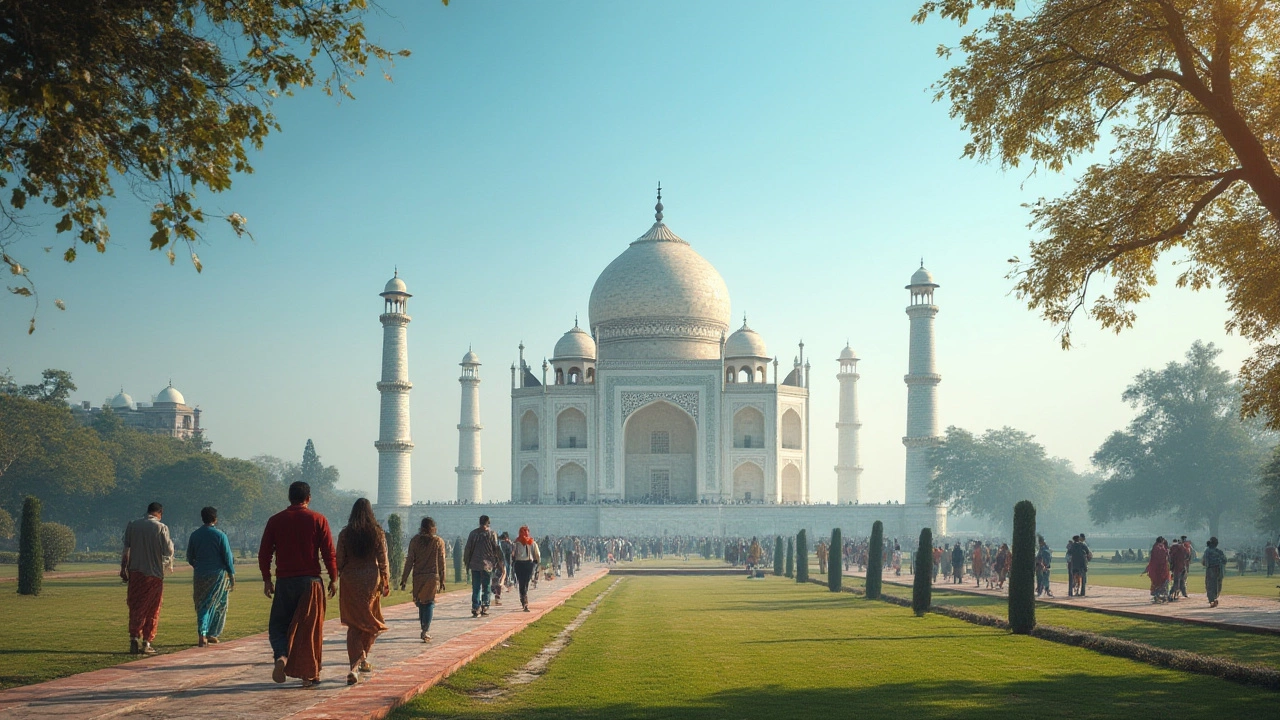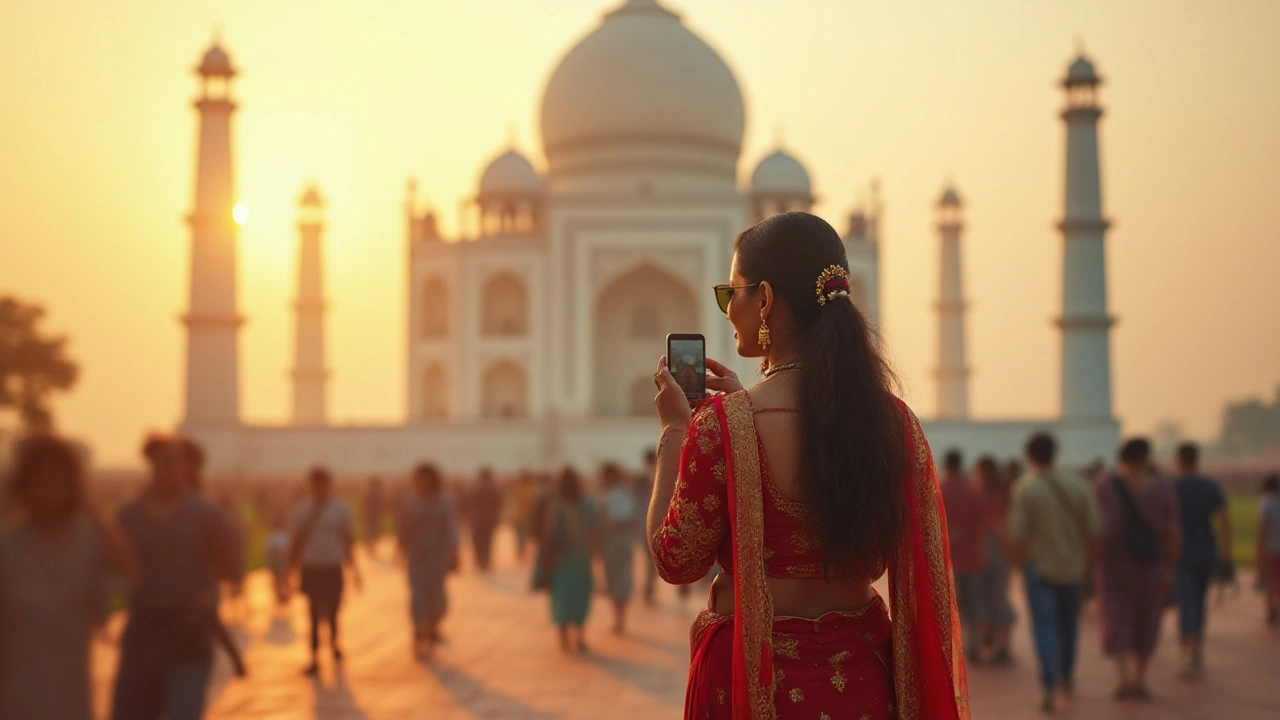Best Month to Visit the Taj Mahal: Weather, Crowds, and Expert Tips
 Jul, 9 2025
Jul, 9 2025
Cracking the code on the best month to stand beneath the marble domes of the Taj Mahal is trickier than you’d think. This isn’t your average sightseeing stop; it’s easily the world’s most-photographed building, with millions pressing at its gates every single year. You’ll hear every opinion—"Go in winter for clear skies!" or "Avoid the holidays or you’ll queue for hours!"—but let’s ditch vague guesses and get into the real heart of what makes one month better than the next when it comes to soaking in Agra’s legend.
The Taj Mahal Through the Seasons: Breaking Down Agra’s Weather
India’s seasons make visiting the Taj Mahal a bit of a gamble if you don’t pick your month wisely. If you’ve only ever traveled in temperate climates, Agra might throw you for a loop. The city swings from bone-dry winters to steamy, suffocating summers, then plunges straight into a drenching monsoon. Each stretch carries its perks and pitfalls.
Let’s start in March. Agra shakes off winter’s chill and the early spring mornings serve up mild sunshine with a hint of leftover coolness in the air. Daytime highs hover around 26°C (79°F), and the flowers bloom in the Taj’s gardens. Not bad for long strolls—and no sweat trickling down your back. April ramps up the temperature into the high 30s, while May is not for the faint of heart; daily highs soar above 40°C (104°F). Locals try to avoid direct sun at this point, and anyone with sense follows suit.
Monsoon’s arrival in June brings some relief from the punishing heat, but you’ll soon find yourself dodging downpours. From July to early September, the sky can open up at any moment. Rivers swell, streets flood, and the air thickens with humidity you can almost drink. You might hear romantic talk of fewer crowds and rain-washed marble, but unless you love soggy shoes and overcast photos, this isn’t the season for you.
So, what’s so special about winter? October signals the dry season’s return. The mercury gracefully slips down to a manageable 20°C to 25°C (68-77°F). Crisp mornings roll into soft, warm afternoons, and the sky’s a photographer’s dream—crystal blue with not a hint of haze. The best stretch is from November to February. Only December and January can throw a curveball: sudden spells of fog sometimes blanket the city, making the Taj appear like a ghostly mirage in the mornings. Sometimes that’s eerie and magical. Other times, it’s just cold, and you’re stuck squinting at shapes instead of gleaming white stone.
So when it comes to weather, November wins for that sweet Goldilocks window—not too hot, not too cold, no rain, no fog, and a light breeze playing across the Yamuna River. More on that in a bit.
Crowds: When Is the Taj Mahal the Most (and Least) Crowded?
Weather isn’t the whole story—escapist dreams can be shattered if you arrive just in time to face hordes of selfie-stick-wielding tourists and school trips pouring across those famous arches. Just because the weather is ideal doesn’t mean you’ll have breathing room. If you go in December through early January, you’ll find lines pretty much everywhere—this is Indian wedding season and the peak for both local and international visitors. Weekends, especially, become packed with families and newlyweds in all manner of dazzling colors.
If you want actual space for yourself (and those all-important, interruption-free photos), target the shoulder months: late October or mid-February. Most tourists haven’t arrived yet or have already gone home, and the Taj is still looking its best. Weekdays always trump weekends. If your trip overlaps a public holiday—like Diwali or Holi—prepare for a party of epic proportions, with city hotels booked out months in advance. The local ticket lines snake around the block.
For the early risers, sunrise is the holy grail. The gates open at dawn, and the crowds haven’t woken up yet. You’ll share the main gardens with photographers, a handful of yogis, and temple bells echoing down the river. By mid-morning, tour buses empty out and the grounds throng with visitors. By noon, the sun is high, and the line to enter the mausoleum can feel endless. The trick? Set your alarm. The most magical hour is always the first.
Monsoon months (July-August) see a plunge in numbers. Some locals claim you can almost have the place to yourself on a rainy weekday. Just know you’re trading crowds for unpredictable weather—and maybe less-than-ideal conditions for photos or exploring the gardens. Honestly, if you truly hate crowds more than you hate wet socks, it’s an argument worth making.

Photography, Light, and Color: How Timing Changes the Experience
It’s no secret—most people rock up to the Taj with a camera (or at least a phone) charged and ready. This place is made for those "wish you were here" moments. But here’s the kicker: the way the Taj Mahal looks can change completely depending on the time of year, day, and even the weather.
During the winter months (November to February), the light is crisp, golden, and generous for photographers, especially right after sunrise and in the late afternoon before sunset. Morning mist gives a mystical vibe; you can grab that famous shot with the Taj floating above its own reflection in the pool. One cool thing to know: on full moon nights, you can book a special viewing ticket. Watching the Taj Mahal glow in the moonlight isn’t just for poets. The marble picks up silver and blue tones you’ll only see at night, and it’s a memory you’ll talk about for ages.
March is amazing for color. Holi—the festival of colors—often brings the city alive, and the gardens at the Taj erupt in bright flowers (roses, jasmine, and even fruit trees). Early spring gives photographers a chance to capture the monument draped in color and surrounded by purple and orange blooms. The only warning: Holi can get very busy, so plan accordingly if you want the best shots without the chaos.
If you’re here in summer (April to June), you’ll get harsh midday sunlight, which bleaches out detail and makes white marble blinding. Early morning or late evening saves the day—you’ll dodge the sun, and the Taj reveals golden and pink hues as it catches oblique light. Monsoon is for the daredevils—yes, the rain makes the marble shine, but cloudy skies swallow up those classic blue backgrounds. Don’t say I didn’t warn you about your soggy gear.
Don’t forget: during peak winter fog (especially in December and January), you can get surreal, almost haunting images of the Taj. It’s not what’s on the postcards, but it sure is unforgettable.
Special Tips and Secrets for Visiting the Taj Mahal
It’s not all about picking a date—you can maximize your visit with a few tried and tested tricks. First up: skip-the-line tickets. They’re available online and save a ton of waiting, especially during weekends or busy months. If you’ve got kids (like I do: nothing tests patience like an eight-year-old in line), these are your best friend.
Pack light and wear simple, comfy clothes—security’s tight, and big bags mean more waiting. Shoes need to come off to enter the mausoleum itself. Carry a pair of socks if you’re squeamish about the (sometimes baking hot) marble. And while the Taj Mahal doesn’t allow food inside, a couple of water bottles and maybe a snack for the kids make all the difference—Agra’s midday sun is no joke.
If you’re a photography nut, bring a polarizing filter; it’ll help with the marble glare on sunny days. And don’t just rush the famous northern view—check out the angles from Mehtab Bagh across the river for sunset shots, or walk along the small lanes behind the complex and catch glimpses of the Taj peeking between rooftops. The lesser-seen sides are quieter and just as enchanting.
Weekdays mean fewer crowds, always. If you can tag your visit to Tuesday morning, you’ll find it a little less chaotic—the Taj is closed to visitors every Friday, so Tuesday and Wednesday generally have the thinnest crowds, with folks either wrapping up weekend trips or not yet arriving for the weekend honeypot.
Finally, always check if your visit overlaps with a local event or government holiday—India doesn’t run on a Western public holiday calendar, and surprises pop up all the time. Planning a couple of backup slots in your itinerary can save the day if you run into an unexpected crowd or closure.

So, Which Month Actually Wins?
Ask anyone who’s visited—a couple of weeks can transform your Taj Mahal experience. If you want my honest answer (and you probably do), circle November. The cool season has locked itself in, but it’s not bitterly cold. The Christmas-New Year rush hasn’t started. You’ll get clear skies, bright gardens, and the kind of morning light that makes the Taj Mahal glow like it was designed for fairytale books.
Late October can be just as lovely, especially if you like fewer fellow visitors. Early February also gets my vote: warmer mornings and that special energy that comes as spring’s just about to burst.
Whenever you settle on a date, this place never loses its magic. That first glimpse through the main gateway? No photo, no guidebook, not even this article will spoil it. The real secret is to arrive with patience, a spare memory card, and an appetite for surprises. Because no matter how perfectly you plan, the Taj Mahal always finds a way to knock you off your feet— and not just because of its beauty, but because of the stories and energy buzzing in the air.